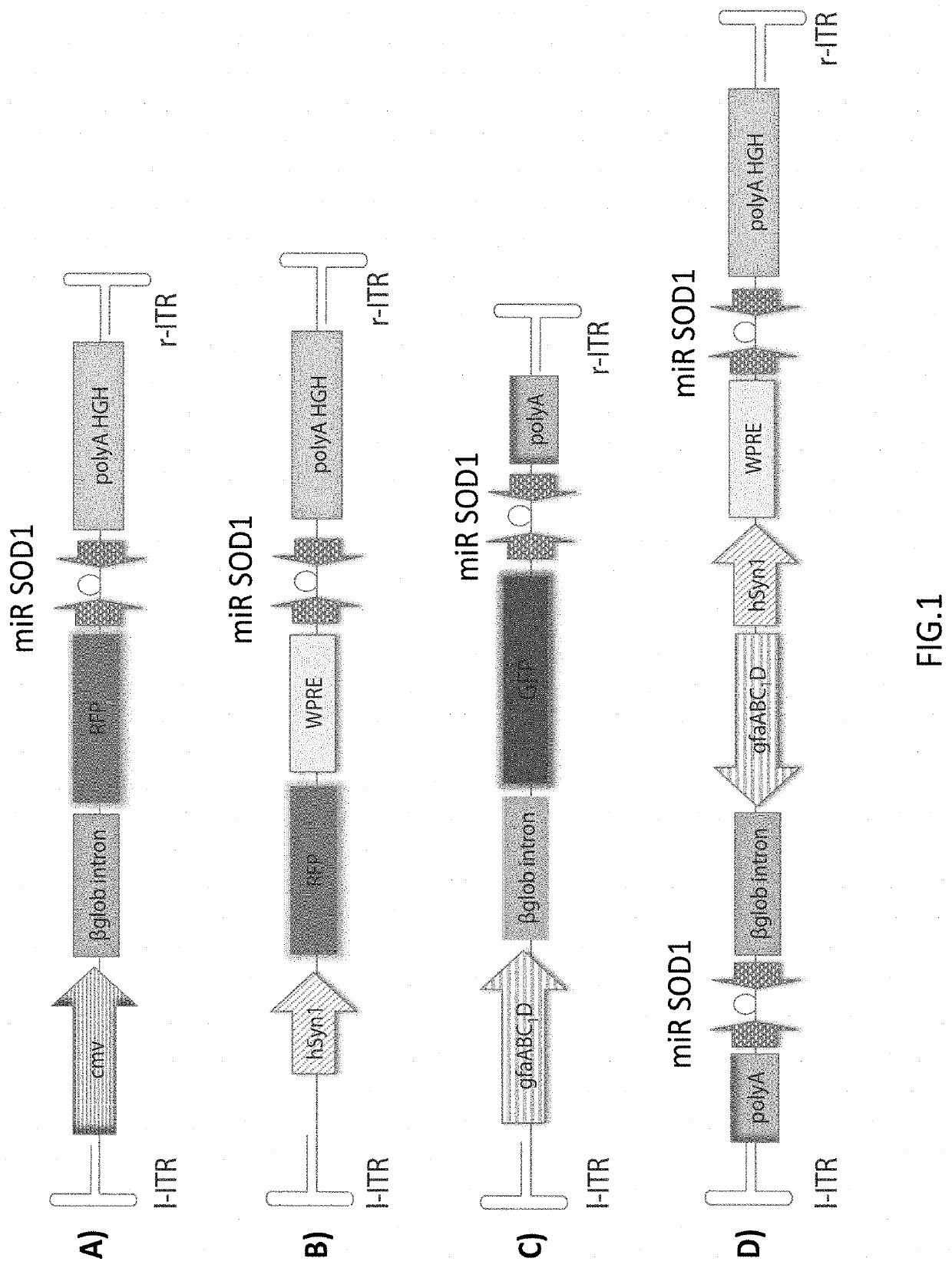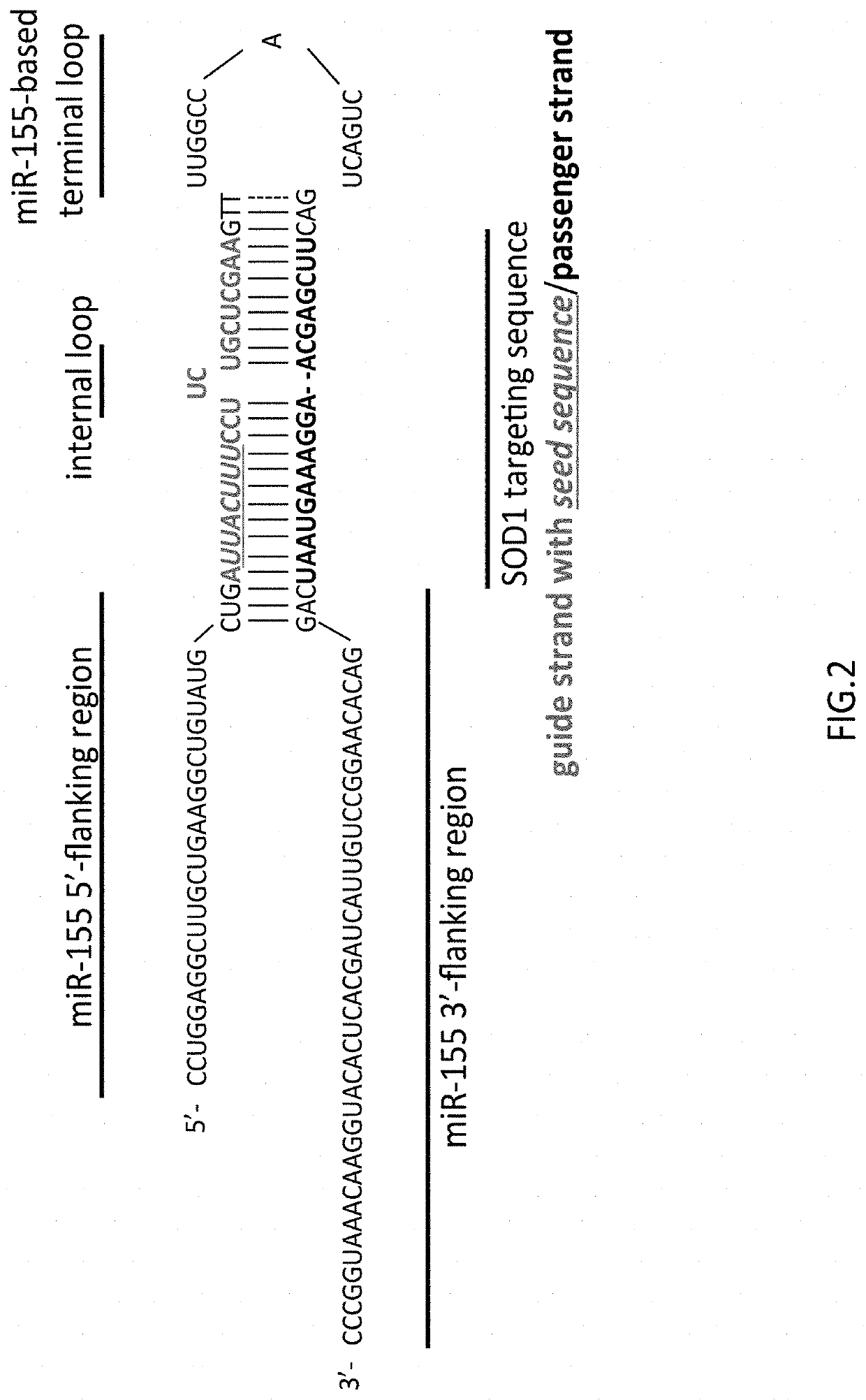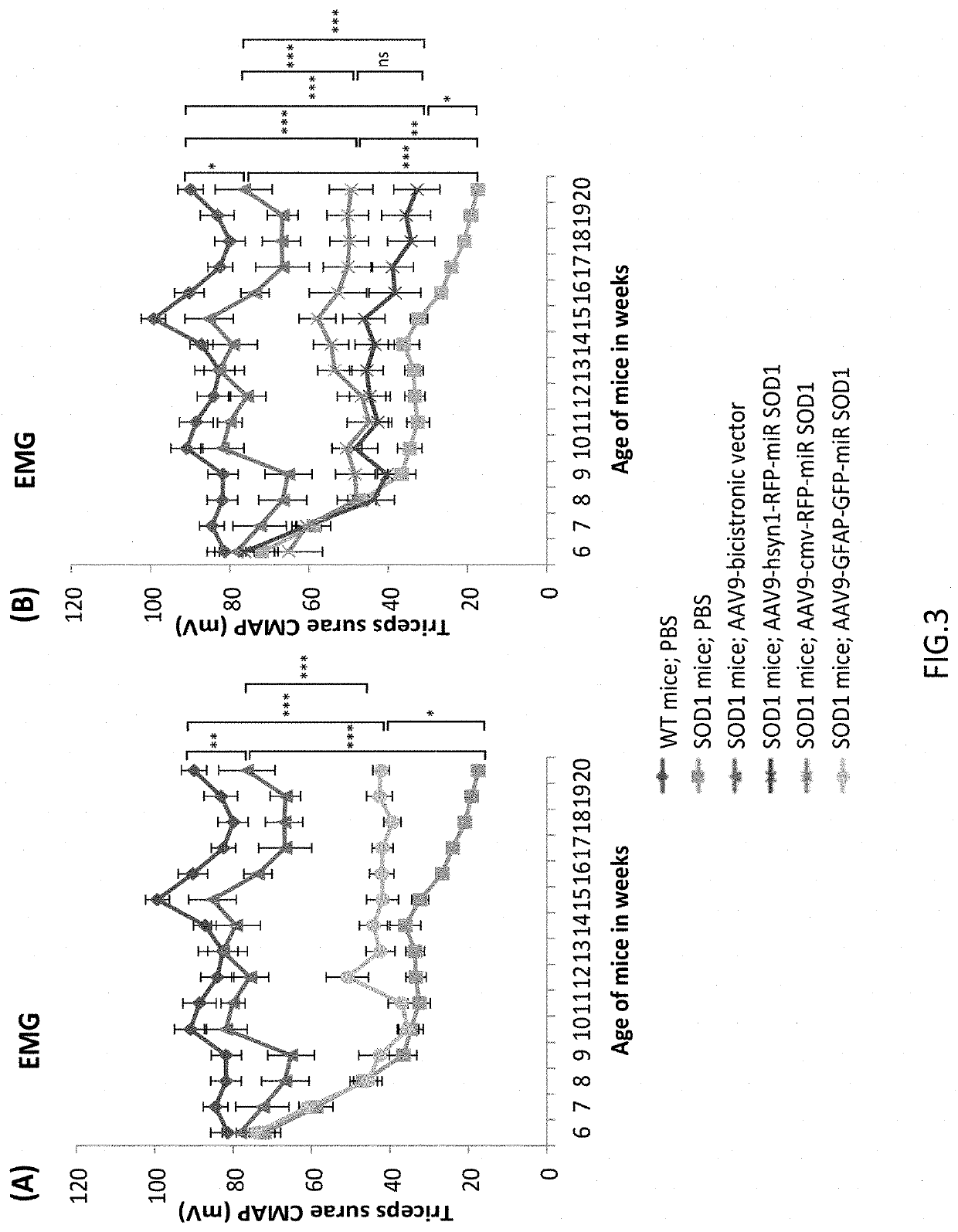Bicistronic AAV Vector for RNA Interference in ALS
a technology of rna interference and aav vector, which is applied in the direction of viruses/bacteriophages, enzymology, and genetic material ingredients, etc., can solve the problems of uncontrollable twitching, gradual weakening of muscles, and unfavorable enzymology,
- Summary
- Abstract
- Description
- Claims
- Application Information
AI Technical Summary
Benefits of technology
Problems solved by technology
Method used
Image
Examples
example 1
[0049]SOD1G93A ALS mice, carrying a transgene which is the mutant human SOD1 containing the Gly93-->Ala (G93A) substitution, are used in the experimental setting. SOD1G93A ALS mice are widely used as a model for ALS and their limbs become progressively paralyzed beginning around six to seven months of age. Life expectancy is normally four to six weeks beyond onset of symptoms. SOD1G93A ALS mice have a highly predictable course of denervation that takes place in two successive episodes. There is an initial pruning of fast-twitch fatigable (FF) motoneurons, resulting in the denervation of type IIb muscle fibers. Vacant neuromuscular junctions (NMJ) are then partially re-innervated by the sprouting of fast-twitch fatigue-resistant (FR) and slow-twitch fatigue-resistant (S) motoneurons until FR motoneurons also start pruning their intramuscular nerve branches leading to a sustained loss of NMJ (Pun, Santos et al., 2006; Kanning, Kaplan et al., 2010).
[0050]SOD1G93A ALS mice were injected...
PUM
 Login to View More
Login to View More Abstract
Description
Claims
Application Information
 Login to View More
Login to View More - R&D
- Intellectual Property
- Life Sciences
- Materials
- Tech Scout
- Unparalleled Data Quality
- Higher Quality Content
- 60% Fewer Hallucinations
Browse by: Latest US Patents, China's latest patents, Technical Efficacy Thesaurus, Application Domain, Technology Topic, Popular Technical Reports.
© 2025 PatSnap. All rights reserved.Legal|Privacy policy|Modern Slavery Act Transparency Statement|Sitemap|About US| Contact US: help@patsnap.com



